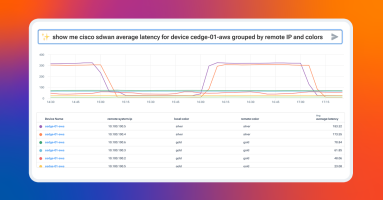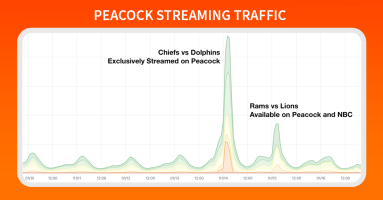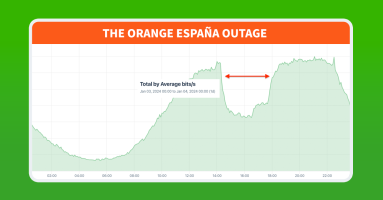Kentik Blog
























Kentik Journeys uses an AI-based, large language model to explore data from your network and troubleshoot problems in real time. Using natural language queries, Kentik Journeys is a huge step forward in leveraging AI to democratize data and make it simple for any engineer at any level to analyze network telemetry at scale.
Kentik NMS has launched and is setting sail in familiar waters. Monitoring with SNMP and streaming telemetry is only the first leg of the journey. In short order, we’ll unfurl additional options, increasing NMS’s velocity and maneuverability.
We’re bringing AI to network observability. And adding new products to Kentik, including a modern NMS, to simplify troubleshooting complex networks.
In the rapidly evolving telecom sector, the concept of “cloudification” is not just a trend but a transformative shift, reshaping how services are delivered and managed. This change is underpinned by modern software architectures featuring modularity, microservices, and cloud-native designs. As we embrace this new era, marked by the rise of “netcos” and “servcos,” we must also navigate the complexities it brings.
NFL playoffs are here, and Doug Madory tells us how Saturday’s first-ever exclusively live-streamed NFL playoff game was delivered without making any references to pop superstar Taylor Swift or her sizzling romance with nine-time Pro Bowler Travis Kelce.
Is SNMP on life support, or is it as relevant today as ever? The answer is more complicated than a simple yes or no. SNMP is reliable, customizable, and very widely supported. However, SNMP has some serious limitations, especially for modern network monitoring — limitations that streaming telemetry solves. In this post, learn about the advantages and drawbacks of SNMP and streaming telemetry and why they should both be a part of a network visibility strategy.
In this post, we share the joys and benefits of having pets while working from home. We discuss the scientific benefits of having pets around, including improved mental health and job performance and offer practical tips for working with pets. From providing moral support during meetings to adding fun to our workdays, our furry companions play a vital role in our daily routines at Kentik.
Orange España, Spain’s second largest mobile operator, suffered a major outage on January 3, 2024. The outage was unprecedented due to the use of RPKI, a mechanism designed to protect internet routing security, as a tool for denial of service. In this post, we dig into the outage and the unique manipulation of RPKI.
Kentik is excited to launch the Kentik Cares Giving Program, a year-round initiative that empowers employees to support the causes they care about. Starting in January 2024, Kentik will match employee donations up to $200 annually, fostering a culture of generosity and community engagement. This program reflects our ongoing commitment to making a meaningful impact and giving back to the communities we serve.
The year might be ending, but the Kentik news never stops. We’re back with our bite-sized roundup of everything you might have missed at Kentik in December 2023.









